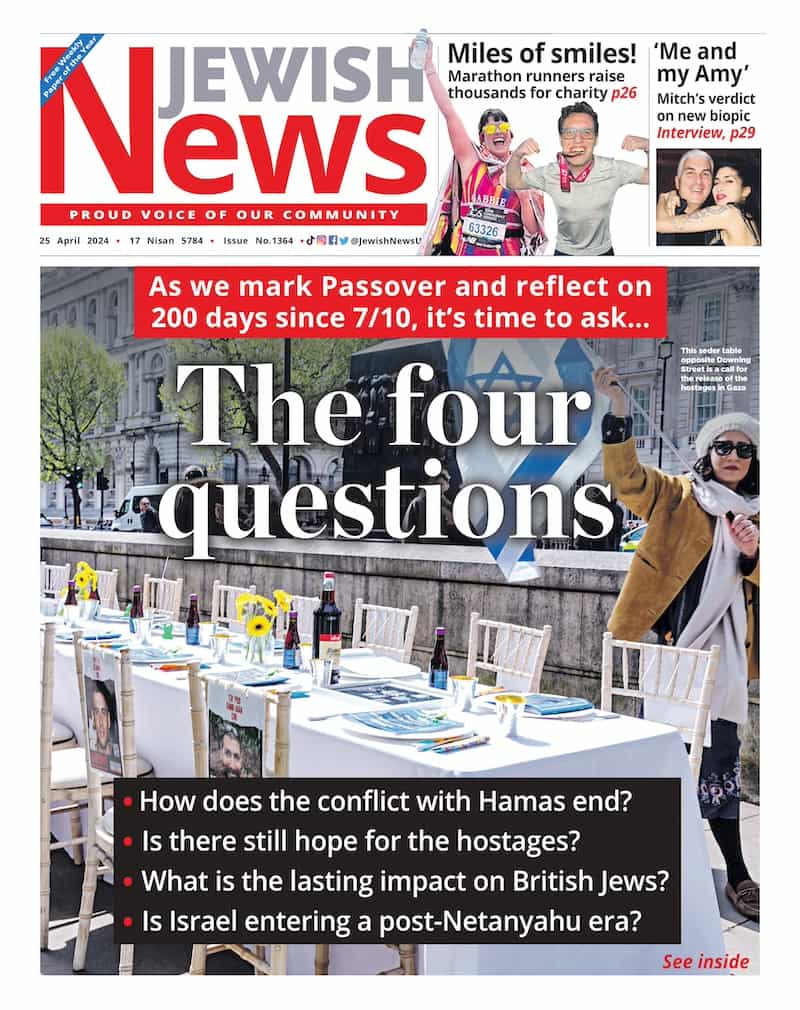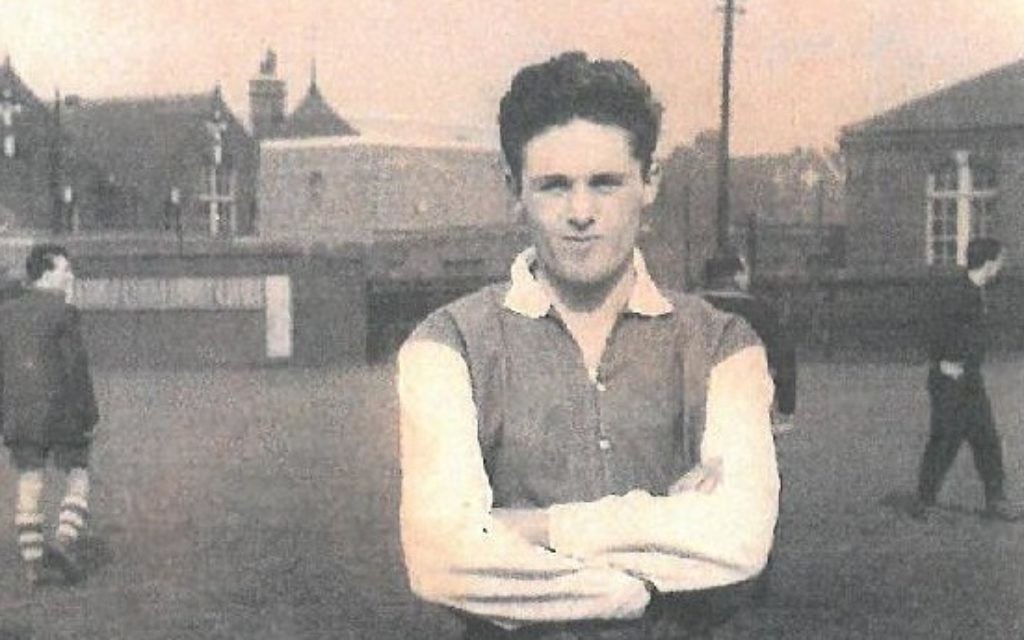The ‘Jewish’ trolleybuses of the East End – gone but not forgotten

By Eddie SUMMERS.
THOSE OF us who once lived in the area between the East End and Stamford Hill (encompassing Stepney, Bethnal Green, Shoreditch, Dalston, Hackney, Stoke Newington and Clapton), will always remember the two “Jewish” trolleybuses – the 647 and the 653.
These two red monsters played a prominent part in our loves. As a youngster, I practically lived in them.
Get The Jewish News Daily Edition by email and never miss our top stories Free Sign Up
On weekday mornings, I used the 647 from the Stamford Hill library (since relocated) to Gardiner’s Corner, Aldgate, as the first part of my journey to Raine’s Foundation Grammar School, Arbour Square, E1. Then, on six nights a week, either of the two buses would transport me to my club, Oxford & St. George’s, then based in Berner Street, off Commercial Road. On alternate Saturdays, I was back on the 647 to Aldgate, prior to meeting up with my pal, Alf Wilkins, then catching the 15, 23 or 40 to Upton Park, where West Ham United play at home.
When I left school, I had a succession of jobs, before working for a time in various East End tailoring firms. Guess which trolleybuses I travelled on!
The bus was powered by electricity, using two poles that were attached to the roof, gliding along overhead wires. Problems would arise when these poles broke free, swinging and wobbling crazily in mid-air. The conductor would jump out, extract from underneath the platform a long, bamboo pole, hooked on one end.
With it, he would juggle the poles back onto the wires. The wobbling was a regular occurrence at Dalston Junction. With the demise of trolleybuses, much of the character departed London’s streets. For they had a style of their own, as they floated gracefully between stops. Surely, it isn’t fanciful to claim that a camaraderie existed among the passengers. To bear this out, I remember an incident typical of this spirit, largely absent nowadays.
I was seated on the lower deck of a 653 that was taking on people at a Clapton bus stop. When the bus was full, and just pulling away, a portly man in a navy blue suit, began chasing after it, trying to jump on. We looked on disapprovingly. But the chaser was determined. As our bus gathered speed, so did he. We watched, at first fascinated, then anxious. Would he make it? By now, we wanted him to get on.
Finally, with a surprisingly athletic leap, he landed on the platform, tightly clutching a white support pole. As he grinned at us in triumph, we all burst into applause.
I recall, with great clarity, an average autumn morning in the late 1940s, riding to work from Stamford Hill, taking the 647. At around 7.15am the terminus was invaded by hordes of mainly Jewish workers boarding four trolleybus routes – 643, 647, 649, and 683. (The 653 stopped around the corner.) These were bound for the East End and the City, where hundreds of clothing factories and workshops were concentrated.
On the bus, tailors, pressers, cutters and machinists filled the dusty seats with their bulky Crombie overcoats, shoulders encroaching the aisles. Dense cigarette smoke swirled around, as Players, Churchmans, Woodbines and Kensitas were puffed, ash littering the floor.
The Daily Express, Mirror, Mail, Herald and News Chronicle were dotted about, pages rustling. Conversation was a colourful mixture of animated Yiddish and broken English, confined mainly to: cursing the ‘Guvnor,’ how close to winning Littlewoods or Vernons Pools, and inquests on Arsenal, Spurs, West Ham and Clapton Orient. Loud exclamations of “Do me a favour!” and “So what does he want of me?” pierced the foul, grey air.
The packed bus whooshed past stops that were choked with long queues. Disappointed faces would peer at us gloomily; we’d stare back with empathy, and maybe a little smugness. Most of the workers took sandwiches for their lunch, usually in a brown paper bag. People were not particularly weight or diet- conscious in those days, so the bread would be liberally ‘shmeared’ with shmultz.
Of course, at Pesach time, the bags contained matzos, accompanied by say, gefillte fish balls and a pickled cucumber. As the passengers moved up and down on the bus, you could hear the matzos crackling in their pockets!
The ‘ding’ of the bus-tickets being punched, the swinging poles, the Yiddish/broken English chatter – these remain powerful memories of the period. The ‘Jewish’ trolleybus is no more, gone but not forgotten.
Will Stamford Hill or Aldgate ever see them again? I should live so long!

Thank you for helping to make Jewish News the leading source of news and opinion for the UK Jewish community. Today we're asking for your invaluable help to continue putting our community first in everything we do.
For as little as £5 a month you can help sustain the vital work we do in celebrating and standing up for Jewish life in Britain.
Jewish News holds our community together and keeps us connected. Like a synagogue, it’s where people turn to feel part of something bigger. It also proudly shows the rest of Britain the vibrancy and rich culture of modern Jewish life.
You can make a quick and easy one-off or monthly contribution of £5, £10, £20 or any other sum you’re comfortable with.
100% of your donation will help us continue celebrating our community, in all its dynamic diversity...
Engaging
Being a community platform means so much more than producing a newspaper and website. One of our proudest roles is media partnering with our invaluable charities to amplify the outstanding work they do to help us all.
Celebrating
There’s no shortage of oys in the world but Jewish News takes every opportunity to celebrate the joys too, through projects like Night of Heroes, 40 Under 40 and other compelling countdowns that make the community kvell with pride.
Pioneering
In the first collaboration between media outlets from different faiths, Jewish News worked with British Muslim TV and Church Times to produce a list of young activists leading the way on interfaith understanding.
Campaigning
Royal Mail issued a stamp honouring Holocaust hero Sir Nicholas Winton after a Jewish News campaign attracted more than 100,000 backers. Jewish Newsalso produces special editions of the paper highlighting pressing issues including mental health and Holocaust remembrance.
Easy access
In an age when news is readily accessible, Jewish News provides high-quality content free online and offline, removing any financial barriers to connecting people.
Voice of our community to wider society
The Jewish News team regularly appears on TV, radio and on the pages of the national press to comment on stories about the Jewish community. Easy access to the paper on the streets of London also means Jewish News provides an invaluable window into the community for the country at large.
We hope you agree all this is worth preserving.
-
By Brigit Grant
-
By Laurent Vaughan - Senior Associate (Bishop & Sewell Solicitors)
-
By Laurent Vaughan - Senior Associate (Bishop & Sewell Solicitors)
-
By Laurent Vaughan - Senior Associate (Bishop & Sewell Solicitors)
-
By Laurent Vaughan - Senior Associate (Bishop & Sewell Solicitors)






















